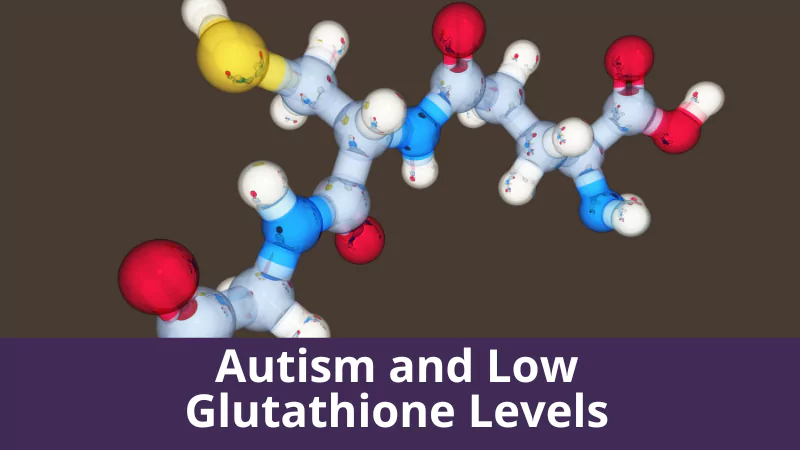When we talk about MTHFR polymorphisms, most practitioners think about methylation, cardiovascular risk, or pregnancy complications. But increasingly, the research is pointing to a different arena where these gene variants may play a pivotal role: the brain. From autism spectrum disorder to schizophrenia and major depression, MTHFR-related impairments in one-carbon metabolism may alter neurodevelopment, neurotransmission, and long-term cognitive resilience. The challenge, as always, lies in separating correlation from causation and identifying where interventions make a meaningful difference.
The Common Thread: Homocysteine, Folate, and Methylation in the Nervous System
MTHFR gene variants—particularly C677T and A1298C—can impair the conversion of 5,10-methylene-THF to 5-methyl-THF. This bottleneck raises homocysteine levels (hyperhomocysteinaemia, HHcy) and depletes methyl donors required for DNA methylation, neurotransmitter metabolism, and neuronal repair. HHcy itself is neurotoxic: it promotes oxidative stress, vascular dysfunction, and excitotoxicity. In parallel, inadequate methyl donors during neurogenesis or later in life may compromise gene expression patterns and synaptic plasticity. These dual mechanisms underpin much of the research linking MTHFR to psychiatric and neurological disorders.
Autism Spectrum Disorder (ASD)
Autism affects around 1% of children worldwide, with symptoms emerging in the first 18 months of life. While more than 600 genes have been implicated, MTHFR has drawn attention because of its impact on methyl donors during early neurodevelopment.
- Key finding: The 677C>T polymorphism shows a more consistent association with ASD than the 1298A>C variant.
- Mechanism: Impaired folate metabolism disrupts DNA methylation and histone modifications at a time when neurogenesis is highly dependent on methyl donors.
- Clinical angle: Maternal folic acid supplementation (~600 μg/day) has been linked to lower ASD risk. Some studies suggest folinic acid supplementation in children with ASD may improve cognitive and behavioural outcomes.
- Emerging consideration: Autoantibodies to folate receptor-α (FRα) in the CSF of ASD children raise the possibility that folate transport at the blood–brain barrier—not just MTHFR status—plays a role.
Alzheimer’s Disease (AD) and Mild Cognitive Impairment (MCI)
Alzheimer’s disease, the leading cause of dementia, is increasingly viewed through a metabolic and inflammatory lens. HHcy is recognised as a risk factor for AD because it accelerates amyloid β aggregation, tau phosphorylation, vascular injury, and inflammatory cascades.
- Key finding: Both 677C>T and 1298A>C polymorphisms have been associated with AD in Chinese cohorts. The 677C>T variant correlates with earlier onset, higher homocysteine, and more severe white matter lesions.
- MCI link: Evidence for MTHFR’s role in MCI (the precursor to AD) is mixed—some small studies find structural brain changes, while meta-analyses do not confirm susceptibility.
- Clinical angle: This genetic vulnerability may identify patients who respond better to homocysteine-lowering strategies (e.g., folate, B12, B6).
Schizophrenia (SCZ)
Schizophrenia remains one of psychiatry’s most enigmatic disorders, with a heritability estimate of up to 80%. MTHFR polymorphisms are among two dozen genetic variants consistently flagged in large genetic databases.
- Key finding: Meta-analyses suggest both 677C>T and 1298A>C variants increase SCZ risk, though results vary by population.
- Mechanism: Impaired methylation could alter gene expression in dopamine, glutamate, and synaptic pathways critical to schizophrenia.
- Clinical nuance: Folate deficiency exacerbates negative symptoms, and some trials of folate/L-methylfolate supplementation show modest improvements—though results are inconsistent. Interestingly, high homocysteine itself, independent of MTHFR, appears linked to depressive symptoms and suicidal behaviour in SCZ patients.
Major Depressive Disorder (MDD)
Depression is both common and highly heterogeneous. About 30% of patients experience treatment-resistant depression (TRD). Here, genetics may offer a clue.
- Key finding: The 677C>T variant has been repeatedly associated with MDD risk.
- Clinical relevance: L-methylfolate supplementation has demonstrated efficacy as an adjunctive treatment, enough to earn FDA approval. This bypasses the enzymatic block created by MTHFR polymorphisms, restoring methylation capacity for monoamine neurotransmitter synthesis.
- Overlap syndromes: The same polymorphism has been linked to migraine with comorbid depression, hinting at shared vascular and methylation-driven mechanisms.
Beyond the Big Four: Bipolar Disorder, Parkinson’s Disease, ADHD, and Eating Disorders
The MTHFR story doesn’t stop with ASD, AD, SCZ, and MDD:
- Bipolar disorder: Associations with 677C>T and 1298A>C variants are reported but inconsistent.
- Parkinson’s disease: HHcy (often worsened by L-DOPA therapy) is a risk factor, but direct links to MTHFR polymorphisms are less convincing.
- ADHD: Some studies link the 1298A>C variant to ADHD risk, though findings are mixed.
- Anorexia nervosa: Women carrying either polymorphism were ~2.6 times more likely to be affected in one study.
These findings suggest MTHFR’s effects may cut across diagnostic categories, shaping vulnerability where one-carbon metabolism intersects with neurotransmitter synthesis and neuronal resilience.
Clinical Takeaways for Practitioners
- Test, don’t guess: Identifying MTHFR polymorphisms—particularly 677C>T—may help explain neuropsychiatric vulnerability in certain patients.
- Look beyond MTHFR: Folate transporters (RFC1, FRα, PCFT) and other one-carbon enzymes may matter just as much.
- Support methylation: L-methylfolate, folinic acid, vitamin B12, and B6 remain the cornerstones of functional support, especially where homocysteine is elevated.
- Time matters: Prenatal folate status and lifelong methyl donor sufficiency both shape outcomes—early intervention is protective, later intervention may be restorative.
- Integrate genetics with context: These polymorphisms rarely act alone. Environmental exposures, diet, stress, and co-morbidities determine whether genetic risks manifest clinically.
Closing Thoughts
The brain is exquisitely sensitive to disruptions in one-carbon metabolism. MTHFR polymorphisms may tip the balance in vulnerable individuals, amplifying the effects of nutritional deficiencies, environmental toxins, or psychosocial stress. While associations remain mixed, the clinical imperative is clear: identify those at risk, correct modifiable factors like folate and homocysteine, and personalise treatment strategies.
As with much in medicine, the genetic signal is only part of the story. But when that signal intersects with modifiable pathways, it gives us a foothold—one that might transform outcomes for patients facing some of the most challenging neuropsychiatric conditions.
For more premium blogs and research updates for practitioners- join the Functional Genomics institute
Reference








